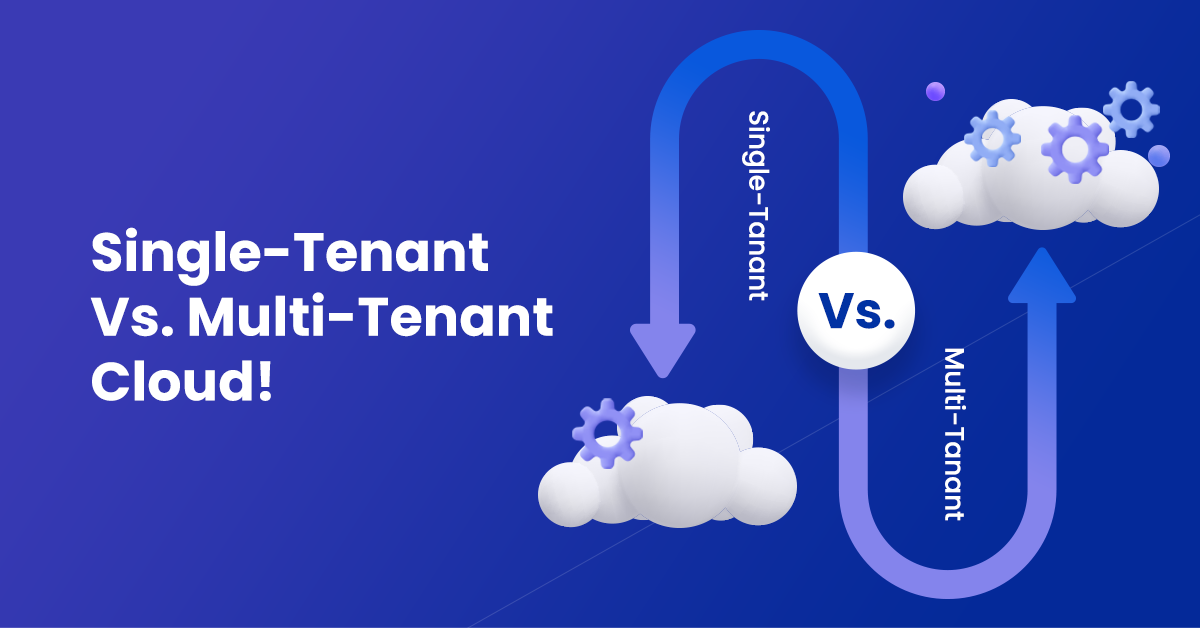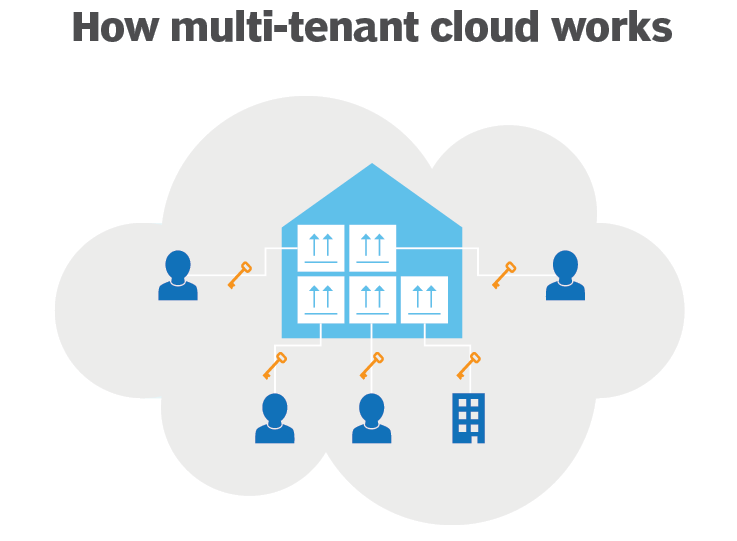Learning
Single-Tenant Vs. Multi-Tenant Cloud in Cloud Architecture

The cloud computing industry has been growing tremendously, and with it comes various approaches to implementing cloud solutions. One significant debate that arises when discussing cloud computing is whether to use a single-tenant or multi-tenant cloud approach. Both have advantages and disadvantages, making it necessary to evaluate the use case and requirements before choosing either. This article will dive deeper into the differences between single-tenant and multi-tenant clouds and what factors influence their use.
Single-Tenant Cloud
Single-tenant cloud is a cloud architecture that dedicates all resources of a single instance to a single user or organization. This means that each user or organization has its own instance of the software, operating system, and hardware. In other words, a single-tenant cloud system operates on a one-to-one relationship between the user and the infrastructure.
- A single-tenant cloud architecture‘s primary benefit is its level of control and customization. Since each user or organization has its own instance, they have complete control over the resources and can customize them to meet their unique needs.
- For instance, if an organization needs to upgrade its hardware to support a specific application or software, they can do so without impacting other users. This level of control is ideal for companies with strict compliance requirements, such as those in the healthcare and financial industries.
- Another advantage of a single-tenant cloud is the ability to isolate resources. This makes tracking and identifying performance issues or security breaches easier. In a single-tenant environment, a user has complete control over their data and can implement additional security measures to protect it. This isolation level ensures that any infrastructure or application issues do not impact other users.
However, the downside of single-tenant cloud is the cost. Since each user or organization has their own instance of the software, operating system, and hardware, the cost of deploying and maintaining the infrastructure can be high. Additionally, the lack of resource sharing means that there may be under-utilization of resources, leading to inefficient resource allocation.
Multi-Tenant Cloud
A multi-tenant cloud is a cloud architecture allowing multiple users or organizations to share the same infrastructure, resources, and services. In this architecture, a single instance of the software, operating system, and hardware is shared among multiple users. This means that each user does not have exclusive control over the resources, and is shared among multiple tenants.
- The primary advantage of a multi-tenant cloud is cost efficiency. Since resources are shared among multiple tenants, the cost of deploying and maintaining the infrastructure is significantly reduced. Additionally, since resources are shared, resources are not underutilized, making resource allocation more efficient.
- Another advantage of a multi-tenant cloud is scalability. Multi-tenant cloud providers can add additional resources and capacity as needed to meet the demands of their users. This makes it easier for organizations to scale up or down as needed without worrying about the infrastructure.
However, the downside of a multi-tenant cloud is the lack of control and customization. Since multiple users share the same infrastructure, they may not have control over how the resources are utilized. Additionally, any customization may have to be done at the platform level, which may not meet an organization’s specific needs.
Factors to consider when choosing between Single-Tenant and Multi-Tenant Cloud
The choice between single-tenant and multi-tenant cloud depends on several factors, including:
- Security: If an organization has strict compliance requirements, it may prefer a single-tenant cloud architecture to completely control the infrastructure and data.
- Cost: A multi-tenant cloud may be the ideal solution if cost is a primary concern. Since resources are shared among multiple tenants, the cost of deploying and maintaining the infrastructure is significantly reduced.
- Customization: If an organization has unique requirements that require specific customizations, then a single-tenant cloud architecture may be the ideal solution.
- Scalability: If an organization needs to scale up or down quickly, then a multi-tenant cloud may be the ideal solution. Multi-tenant cloud providers can add additional resources and capacity as needed to meet the demands of their users.
- Performance: A single-tenant cloud architecture may be the ideal solution if an organization requires high-performance computing. Since each user has exclusive control over the resources, they can customize and optimize the infrastructure for high-performance computing.
- Resource utilization: If an organization requires efficient resource utilization, then multi-tenant cloud may be the ideal solution. Since resources are shared among multiple tenants, there is no under-utilization of resources, making resource allocation more efficient.
Conclusion
In conclusion, the choice between single-tenant and multi-tenant cloud depends on several factors, including security, cost, customization, scalability, performance, and resource utilization. While a single-tenant cloud provides complete control and customization, it can be costly. Multi-tenant cloud, on the other hand, is cost-efficient but lacks control and customization. Therefore, it is important to evaluate the use case and requirements before choosing either one.
Ultimately, the decision between single-tenant and multi-tenant cloud comes down to what is best for the organization’s unique needs and requirements. Both architectures have their advantages and disadvantages, and the key is to find the one that provides the best balance between control, cost, and efficiency.
People Also Reading:
How To Use Blooket Hacks: Unleash Your Potential In The Game!
5 Website Maintenance Hacks To Ensure Uninterrupted Online Success
































